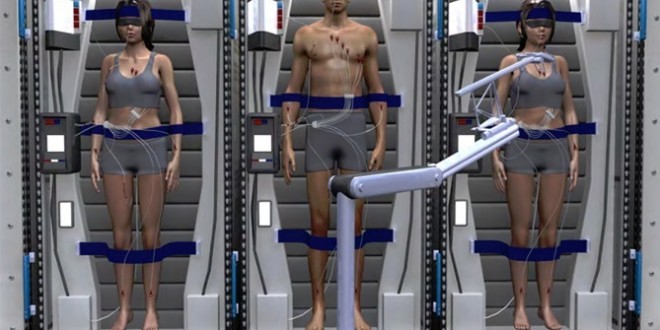By Everett
In most space movies in this age, the occupants of a space ship are put in deep sleep, as it will take many many years to get to their destination. This kind of deep-sleep technology has been complete fiction. But it may become reality soon. A company called Spaceworks claims to have made a breakthrough. The way to put humans into deep sleep is by putting them into a medical condition called therapeutic hypothermia. Basically, you are just making them super cold so the organs work very slowly. This is how bears and other animals hibernate through the winter, and although making people cold to sleep for a long time has been a concept for a long time, it may finally be used. And even after astronauts have slept for many days, once awoken, they need to sleep more to transition from the “sleeping passenger” to “active explorer”.
This is how it works. There is always one astronaut who is awake for a brief period.The colleague currently awake could check in on the other ones who are still unconscious to make sure their intravenous feeding tubes are clear, and urine removal systems and so on are working properly. He can also communicate with Earth. He can even check his emails. Then after two or three days, he wakes up the next astronaut by activating a heating system that brings his or her body temperature up to normal.Then the awakened astronaut straps the other into the hibernation module, hooks up the medical systems and inserts a body cooling tube through a nostril. Heating pads behind the astronaut make sure the nasal tube doesn’t cool down their body too much.A temperature drop of only about five degrees Fahrenheit is necessary — from 98.6 to about 93 degrees.Trace amounts of sedatives in the feeding line would suppress the astronaut’s shiver reflex.The habitat unit housing the sleepers would rotate to create centrifugal force simulating gravity. That would help to mitigate the reduction in bone density that naturally occurs in zero gravity. This kind of technology will take a long time to perfect, though; it is estimated to be around 30 years, the same amount of time it will take until humans can travel to Mars.
(image credit: discovery.com)
 Tempus Magazine By Students, For Students
Tempus Magazine By Students, For Students 



